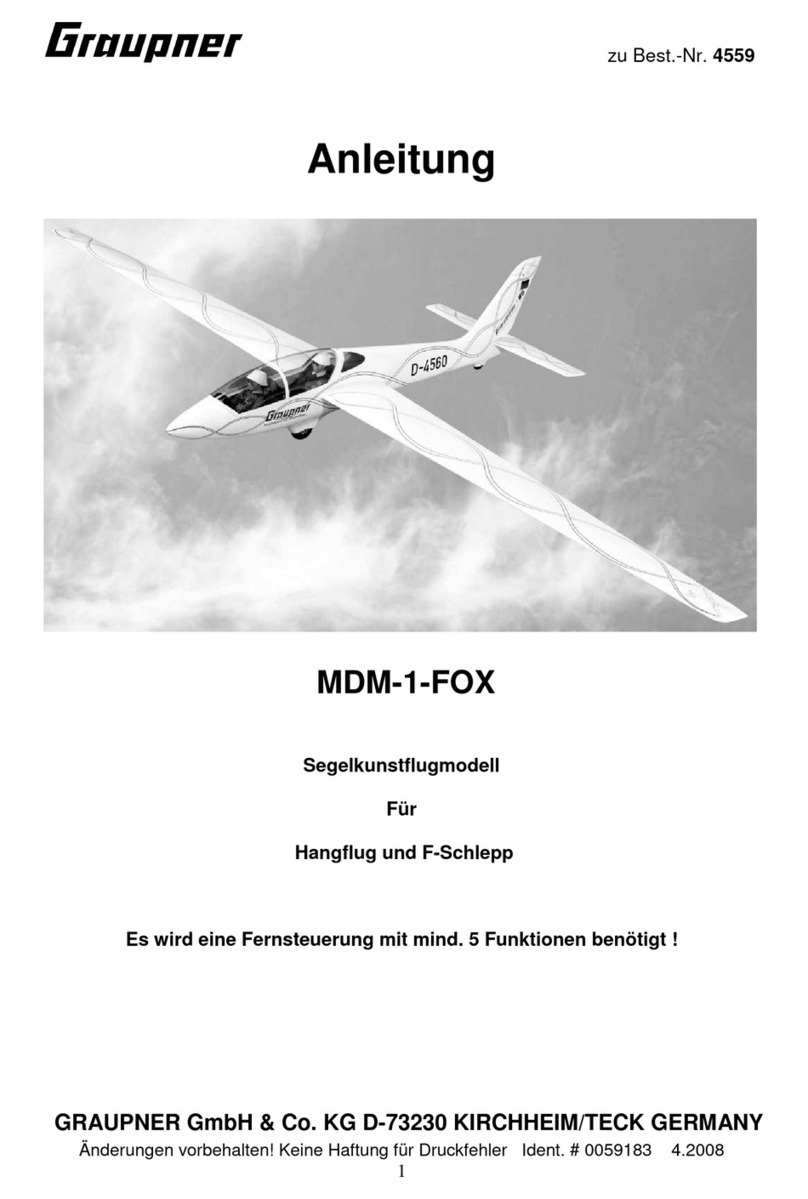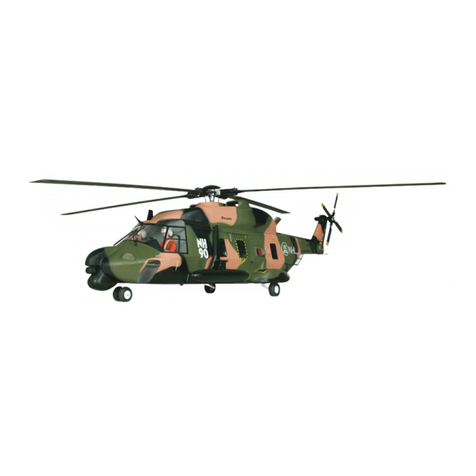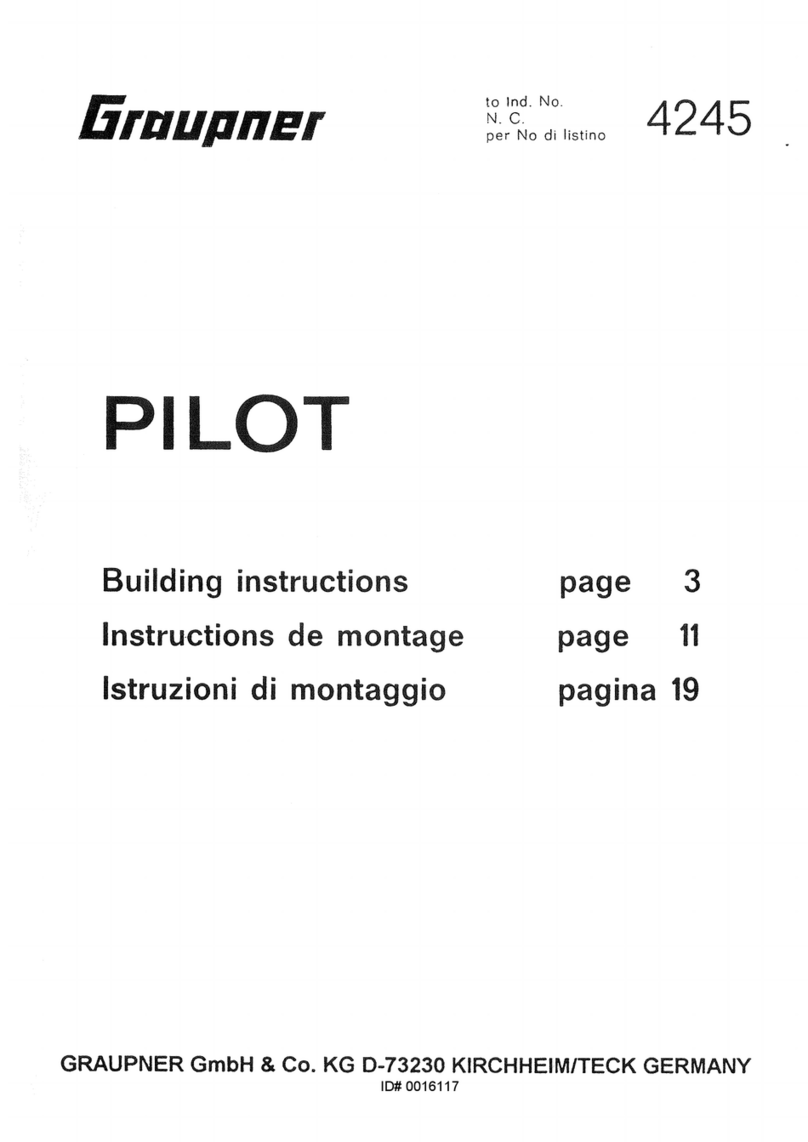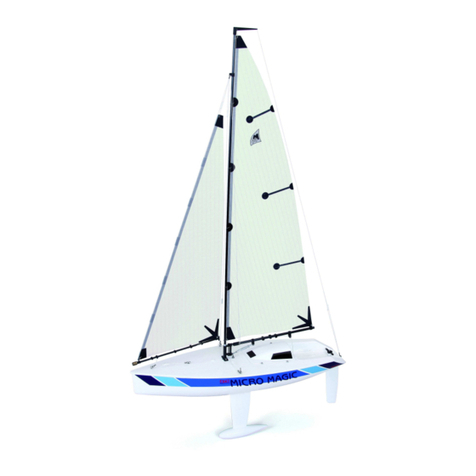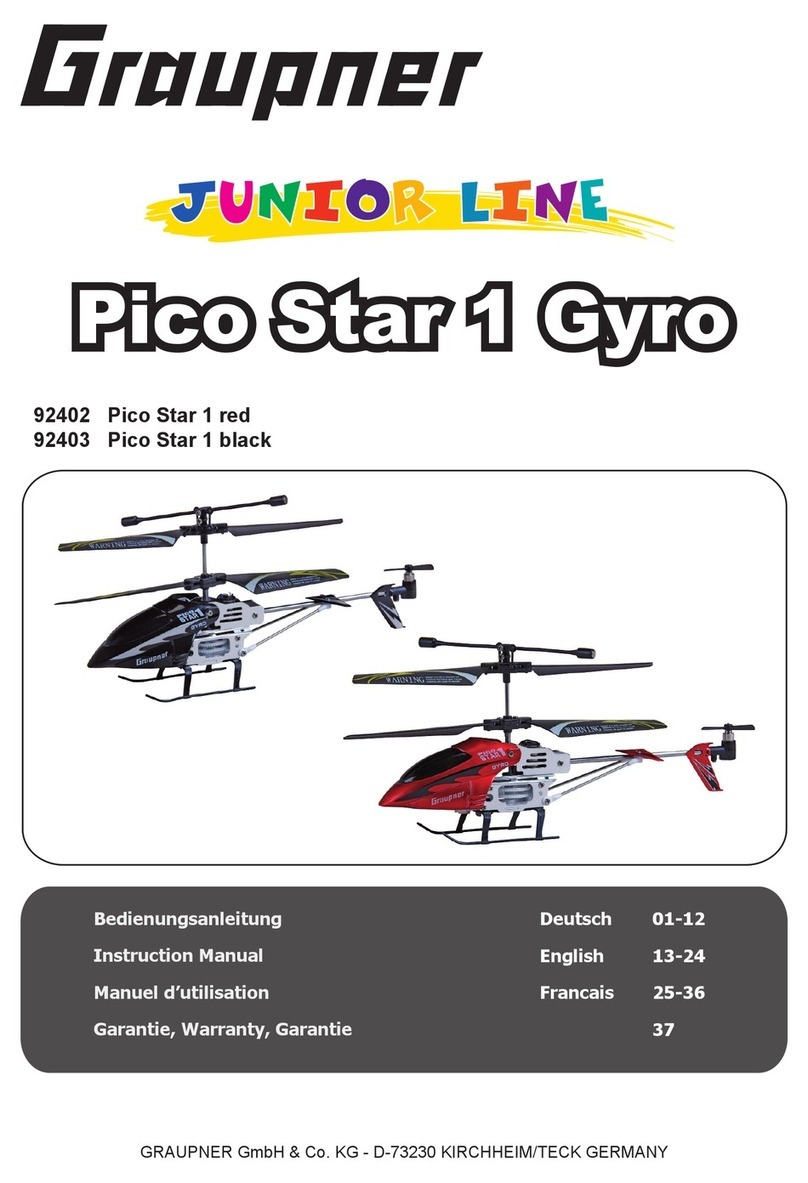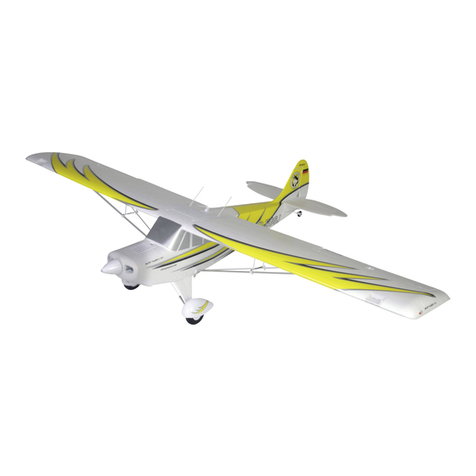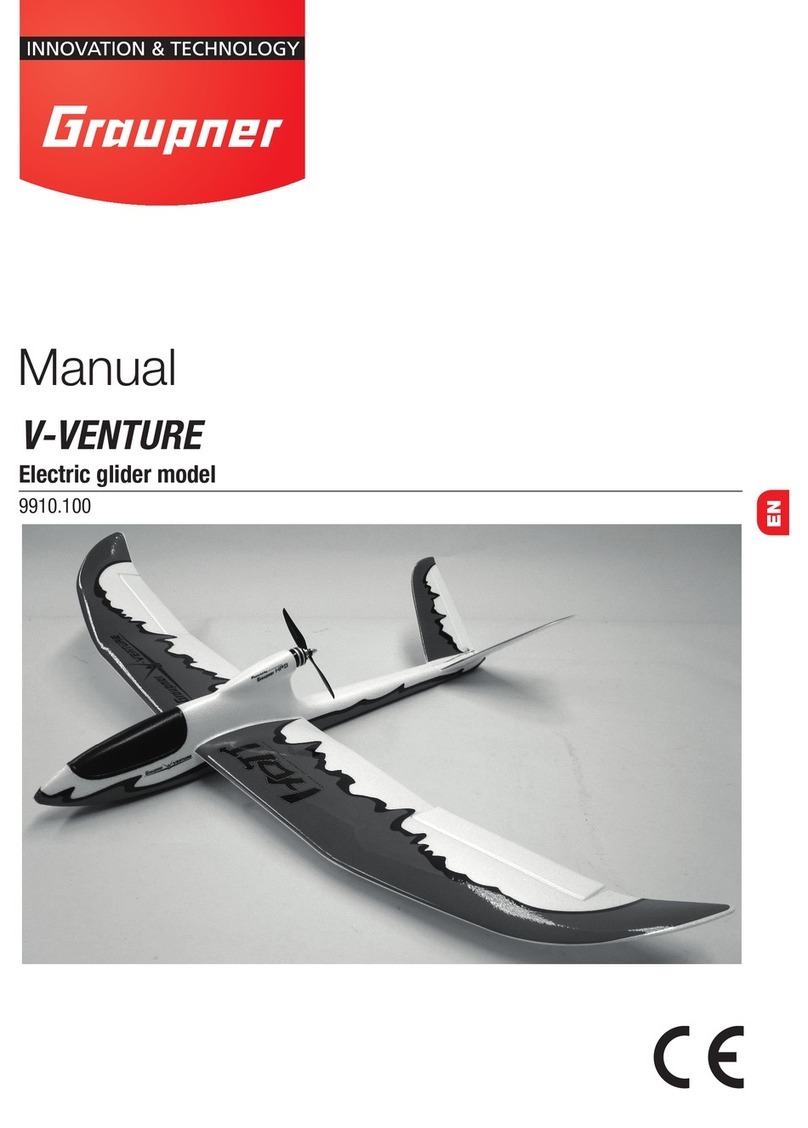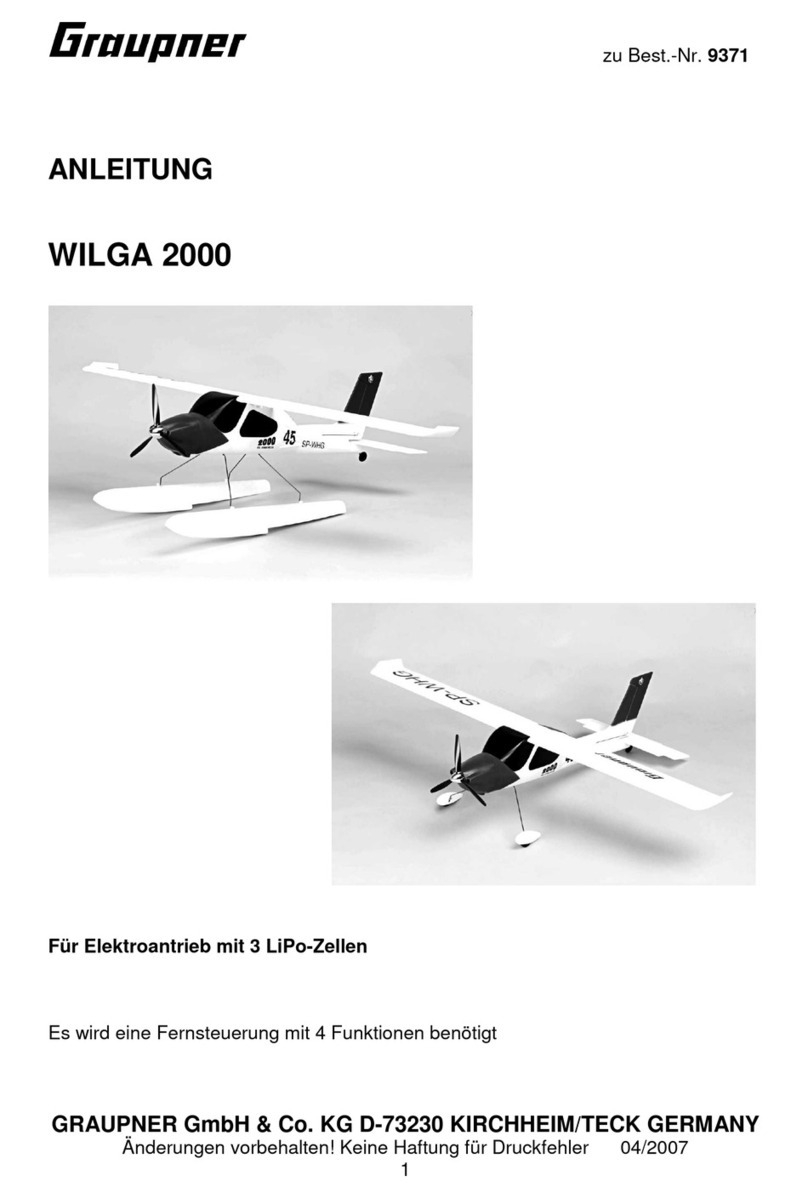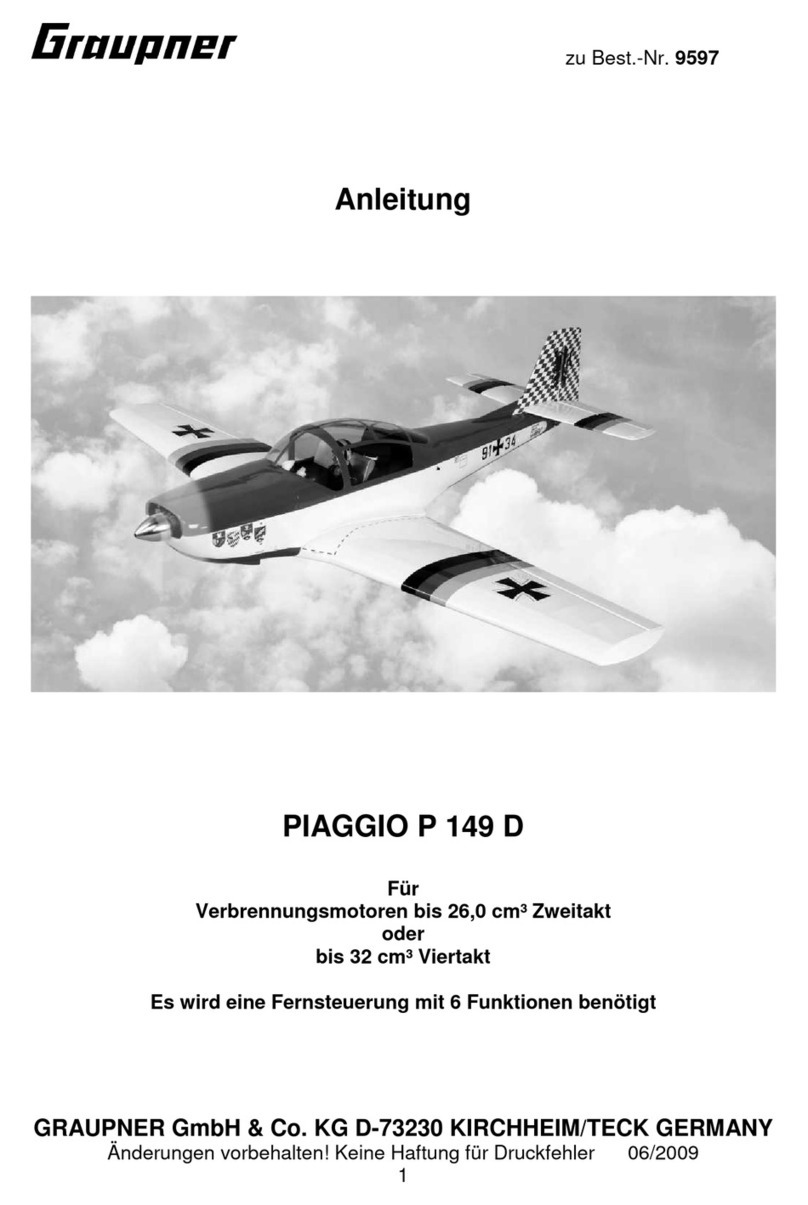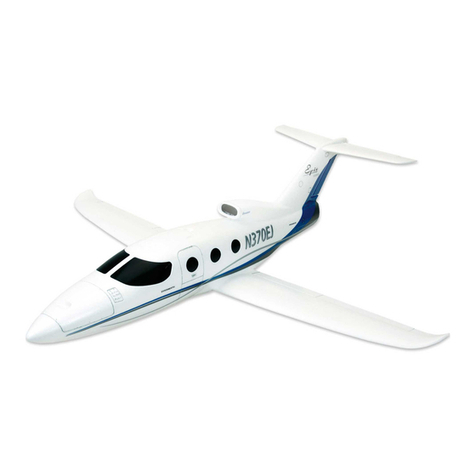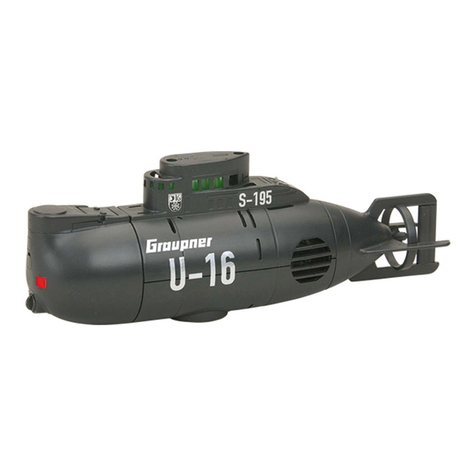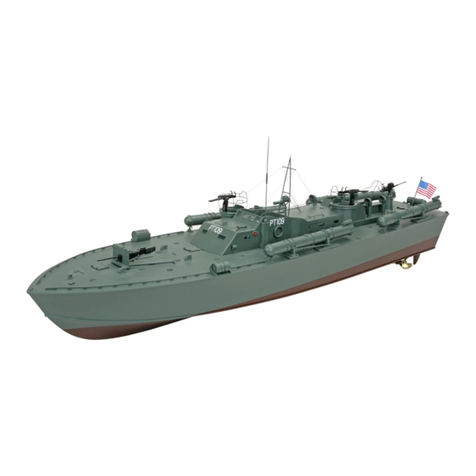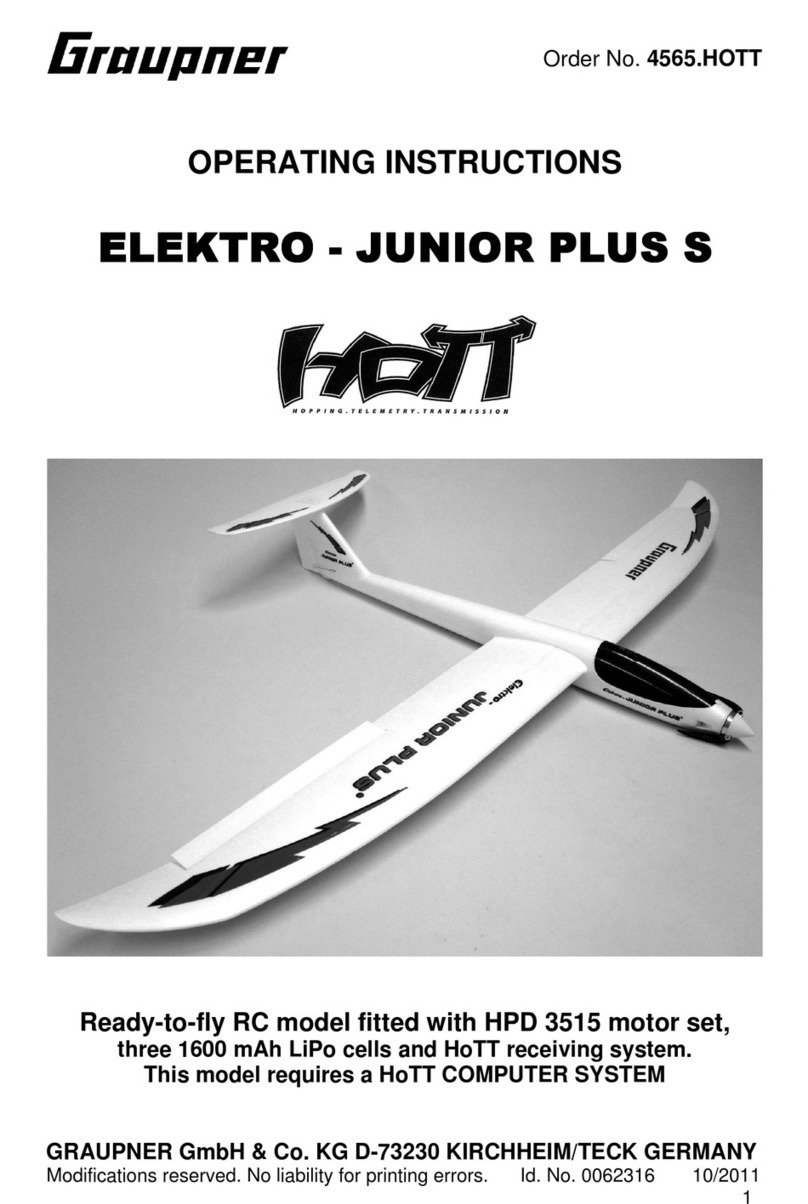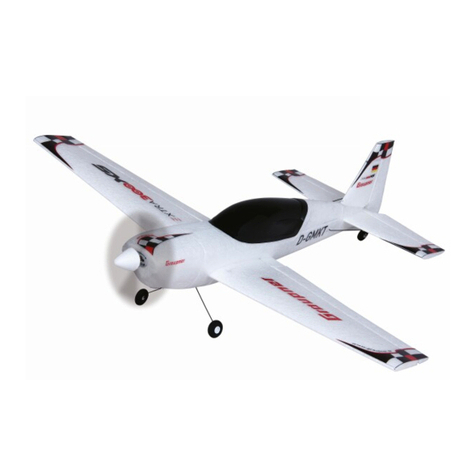GRAUPNER GmbH & Co. KG D-73230 KIRCHHEIM/TECK GERMANY
Changes reserved! No liability for printing errors! 3/2012
9
Please address these issues with an experienced model pilot, a club or a model aircraft school. We also
refer you to dealerships and relevant trade publications. The optimal situation is to fly from an approved
model airfield as a club member.
Adhesives contain substances which, under some circumstances, can be harmful. It is therefore
imperative that the manufacturer's respective notices and warnings are observed.
The operator must be in full possession of complete physical and mental facilities. As with driving an
automobile, operating a model aircraft under the influence of alcohol or drugs is not allowed.
Inform those persons passing by or watching about the hazards associated with your model before you
start it and admonish these persons to maintain a safe distance.
Always keep the necessary safe distance between the flying model and persons or obstacles; never fly
over or toward other persons!
Model flying activity may only be pursued when outdoor temperatures are between - 5 °C and + 35 °C.
Extreme temperatures can lead to changes in battery capacity, affect material characteristics and even,
for example, cause adhesive bonds to become defective.
Every model pilot is to behave such that public safety (in particular other persons and property) and
model flying activities in the area are neither endangered nor disturbed.
Never fly the model aircraft in the vicinity of high-voltage transmission lines, industrial premises,
residential areas, public streets, school yards or playgrounds and the like.
Pre-start checks
Perform checks for correct functionality before every use. Switch on the transmitter and receiver for this.
Pull out the transmitter antenna, check all control surfaces to be in their neutral positions, that they
function flawlessly and that their direction of throw is correct. Repeat these checks again when the motor
is running and a helper holds the model securely in place.
If you are a novice to model flying, it is advantageous to have an experienced helper at your side during
the checks and the first few flights.
Warnings must absolutely be observed. They point out situations and activities which, if disregarded, can
lead to severe injuries – in extreme cases even to lethal injuries or permanent disabilities.
Motor-driven propellers present a constant injury hazard. They may never come into contact with any
body part! A rapidly turning aircraft propeller can, for example, sever a finger!
Never place yourself in or in-front-of the plane of a turning aircraft propeller! A part of the propeller or the
entire propeller could break loose and be hurled away at great speed and energy to hit you or others. This
can lead to severe injuries. Be careful that no foreign object comes into contact with a turning propeller!
A blockage of the propeller by any kind of part must be precluded.
Therefore, check the model and all of its attached parts (e.g. propellers, RC parts, etc.) for secure seating
and possible damage before every use. The model may only be put into operation after all defects have
been corrected.
Check that the transmitter frequency to be used is free. Only then can the transmitter be switched on!
Radio frequency interference caused by unknown sources can occur anytime without warning! The model
is then out of control and unpredictable! Do not leave the remote control system unattended, this
prevents unauthorized third-parties from handling the system.
Switch on the electric motor only when nothing is in the turning area of the propeller. Never try to stop a
running propeller. Only operate the propeller with the motor when both are installed in the model.
The model's flying attitude must always be explicitly recognizable during the entire flight in order to
ensure secure control and maneuvers. If functional impairments or disturbances become evident during a
flight, a landing must be initiated immediately for reasons of safety. You must always avoid other aircraft.
The take-off/landing strip must be free of persons and other obstacles.
Always ensure the batteries are fully charged as otherwise the flawless operation of the RC system
cannot be assured.
Never use batteries which have been overheated, become defective or are damaged. The battery
manufacturer's usage instructions must always be followed.

